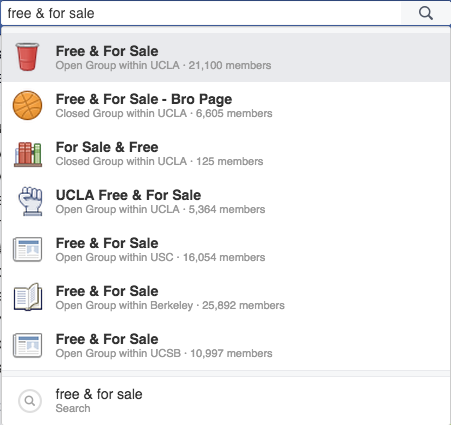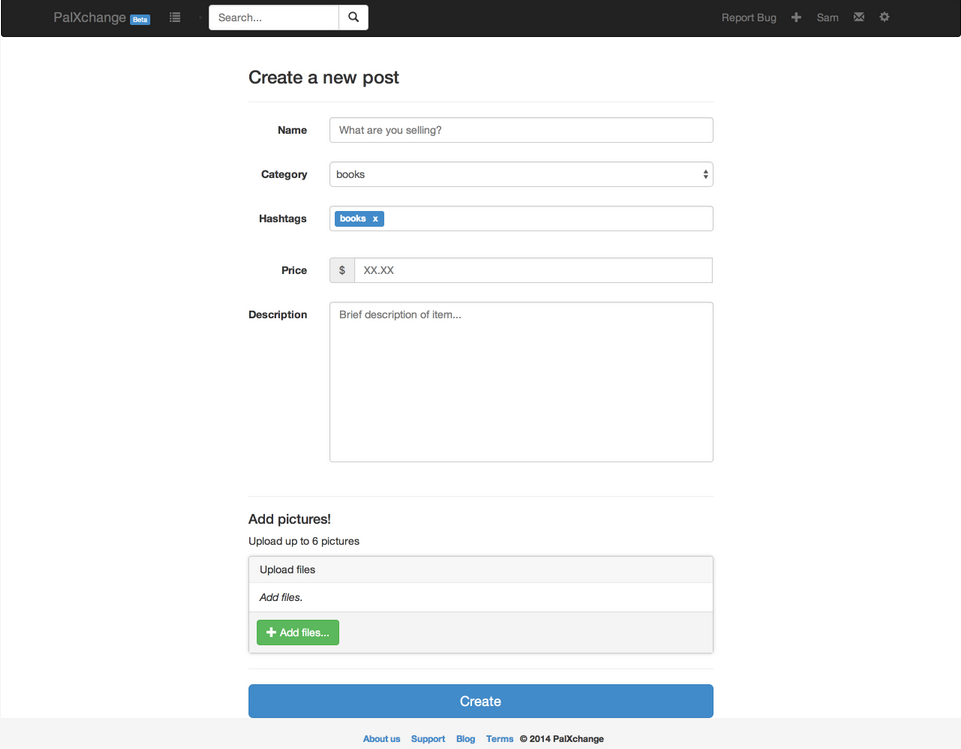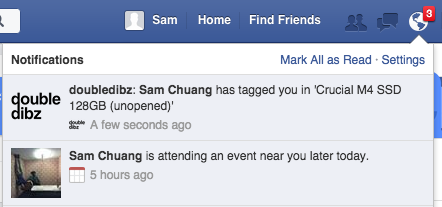
Why did we created DoubleDibz
DoubleDibz was our attempt to catch on the trend of the rapidly growing usage of college for-sale groups on Facebook. This was before Facebook introduced the special "selling post". At the time, for sale groups were no different from any other groups, where members can post and others can comment; yet thousands of students started posting about selling textbooks, electronics, event tickets, used furnitures, and plenty of other types of items. It was extraordinary - more than half of the UCLA students are buying and selling on Facebook. I bet not even this ratio of students use Twitter.

As a frequent visitor of the group, I have witnessed the beginning of this trend and how fast it has grown. It's incredible how the market created its own fit on a platform not originally intended for this purpose. In my opinion, besides the fact that everyone already on Facebook and it has the best social features, the biggest driver for the trend is the sense of security and trust instituted in private Facebook groups. Unlike craiglist, here you feel comfortable buying, selling and meeting up with another student from the same school. This makes Facebook well positioned for this market.
At the time, a couple friends (Sean and Justin) and I really wanted to try doing a startup; we were half serious of course. We met once a week brainstorming ideas with the goal of applying to UCLA's summer startup accelerator. The exact plan wasn't very clear as Justin and I both have an internship lined up for the summer. We agreed that if we got in the accelerator we would push back our internship. It was a very thrilling plan. Unfortunately, the idea we came up with at the time didn't make the shot. I guess our pitch wasn't as enticing as we thought. In light of the news, we still decided to continue, and we came up with the idea of DoubleDibz (well, at the time it was called Palxchange).
It made sense. For sale groups are growing like crazy on Facebook, but the tools are basic and there are tons of problems, such as noise, spam, poor search functionality, unintuitive layout for browsing, lack of categories, and this list can go on. So why not build a private social network for buying and selling and we'll address all of these shortcomings Facebook has. The idea really made a lot of sense. Although we didn't think of a good way to monetize besides using the good old ads model but we thought we had a good chance to build our user base by providing a better buying and selling experience than Facebook.
It was a TON of work. Only Justin and I could code and at this early stage neither Sean nor Claudia (who joined later and helped us with design and advertising strategies) could really help. We knew that a MVP had to be created first before we can start iterating from users' feedbacks. We spent a good month building out the first MVP, which has the essential Facebook features - create selling posts, message sellers, and notifications. The backend was created in Flask and frontend was fully dynamic and built in Backbone. later we also added search functionality and categorization. These were the only screen shots I had from the time:


The supply and demand
Then we faced the chicken and egg problem. Sure, our product seemed to work fine and have addressed a couple problems we identified from Facebook. But now what? How do we get sellers to come posting when we don't have buyers using it. And why would potential buyers come to our site when nothing is being sold? I suppose we could start by selling random crap that I had in my apartment (it's funny how this was what Jack Ma did when he first started Taobao). We looked at Airbnb's growth hack in its early days to solve its supply and demand problem. By piggybacking on Craiglist, Airbnb was able to get a lot of traction really early. This was a no brainer for us. We'll piggyback from existing Facebook for sale groups.
This was why we created a service we called FBsync. Every 10 seconds, it pulls selling posts from different for sale group within the UCLA community (e.g. textbook, housing, clothing, etc) and this allows us to bootstrap from the existing posts on Facebook and present them with better browsing experience. It was our hope to solve the supply problem. In terms of the demand, we started deeper integration with Facebook. For example, if a selling post is created on our platform, we made it very easy to "share" the post back to specific Facebook for sale group.
One of the interesting integrations we experimented with is tagging Facebook friends on our platform, and sending those friends notification on Facebook about the item. Facebook is really good at connecting people, and we noticed a behavior that when you see something that you think your friends would be interested, tagging your friend is a no brainer. This is different from sharing on your friends wall or sending them messages, since this action is low friction and makes tagging multiple people easily. We wanted to replicate this experience on Doubledibz. It was kind of a hack since the link of the notification cannot bring the user offsite, so we had to create a canvas page of DoubleDibz on Facebook for viewing products from tagged notifications. The flow looks something like this:


The dawn
We tried to create everything we thought was necessary for a good buyer and seller experience on our platform. However, at the end, we couldn't take over Facebook's popularity. We faced a lot of friction trying to redirect people in joining a new platform. Even though Facebook wasn't intended for online C2C buying and selling, its default social features - private messaging, groups, posts, comments, and likes - already create a very intuitive and natural environment for this market. The last straw was knowing that Facebook is improving for sale groups. And we knew that Facebook groups would only become better, with more tools developed for specific types of collaboration. We finally decided to pull the trigger and call it the end. The convenience of Facebook simply outweighs most if not all the benefit of our standalone platform.
Now that I'm writing this, I feel quite sad. But looking back, it was an amazing experience - to be able to fully dedicate myself on an idea and working closely with Justin, Claudia, and Sean in a team dynamic was a great learning experience. I'm writing to share with you guys all the things that I have learned along the way. Since neither Justin and I had significant backend and frontend experience, we had to learn so much in order to create a website from scratch. What we have learned are likely very useful to anyone who is thinking of creating his or her own website. So here I am. I hope these tutorials could significantly reduce the amount of learning overhead so you can focus on what's really important for your own application.